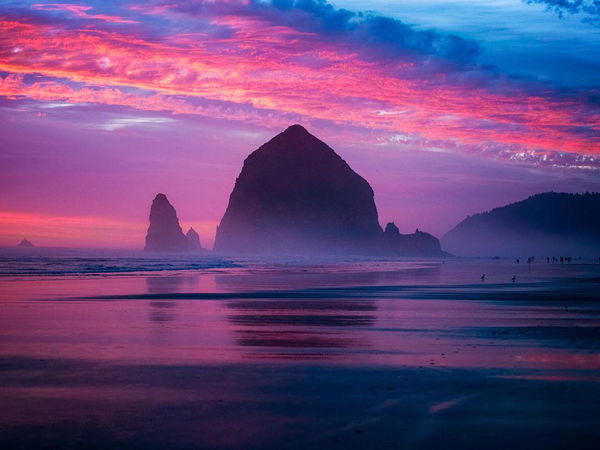

During the warmer months, surfing is one of the most popular leisurely pursuits. More and more people are flocking to beaches to enjoy the waves and surf, making these activities more popular. There are many places on the globe where you may find famous surf beaches, but only a select handful where you can really make your friends and followers envious with your holiday photos. Cannon Beach, Oregon, United States, is one such popular destination for surfers.
Go USA, the official U.S. travel and tourist agency, has lately published something very exceptional for surfers. This time, the official Go USA Facebook page highlighted Cannon Beach and its unique sandy beach, which is home to the famous Haystack Rock.
ADVERTISEMENT
Article continues below this ad
A paradise for surfing enthusiasts
Haystack Rock is a natural attraction in Oregon’s Cannon Beach. The distance between the famed rock and the water’s edge is 235 feet (72 meters). It is recommended for vacationers to go to the region at low tide to explore the intertidal zone and discover brilliant sea stars and other intriguing tidepool critters. The beach is a great place to go bird-watching any time of the year because of the variety of species that can be spotted there. The maritime ecosystem is a component of the Oregon Islands National Wildlife Refuge (OINWR), hence its natural features are protected by the state. The OINWR also makes sure that tourists are not tampering with the rocks or scaring away the local wildlife within a 300-yard radius of the marine construction.
ALSO READ – “Going Up to the Mountain”: Surfing Dream in Swiss Alps Comes True for Pro Big Wave Surfer
Go USA mentions the beach’s inclusion on National Geographic’s list of the 100 most beautiful beaches in the world in the Facebook post. The beach is a major tourist attraction. Visitors indulge in Pacific Northwest cuisine and stay in opulent beachside accommodations in the hamlet.
Origin of this beautiful marine structure
Extensive lava flowed from the Columbia Plateau to the Oregon Coast around 17,000,000 years ago, according to research. Some of this lava intruded into the soft marine strata by following the historic Columbia River’s drainage system to the ocean. They were buried for a long time after they cooled and solidified into basalt rock.
ADVERTISEMENT
Article continues below this ad

ADVERTISEMENT
Article continues below this ad
These basalt rocks were then exposed because of fluctuations in sea level. The softer sediments that made up the notable rock structure were swept away by erosion, which also played a distinctive role. Haystack Rock, a favorite of surfers everywhere, is the result of a series of natural plays in the region.
WATCH THIS STORY – Man realizes his surfing dream in impossible conditions with an idea that “came up over a few beers”
ADVERTISEMENT
ADVERTISEMENT
ADVERTISEMENT
ADVERTISEMENT

